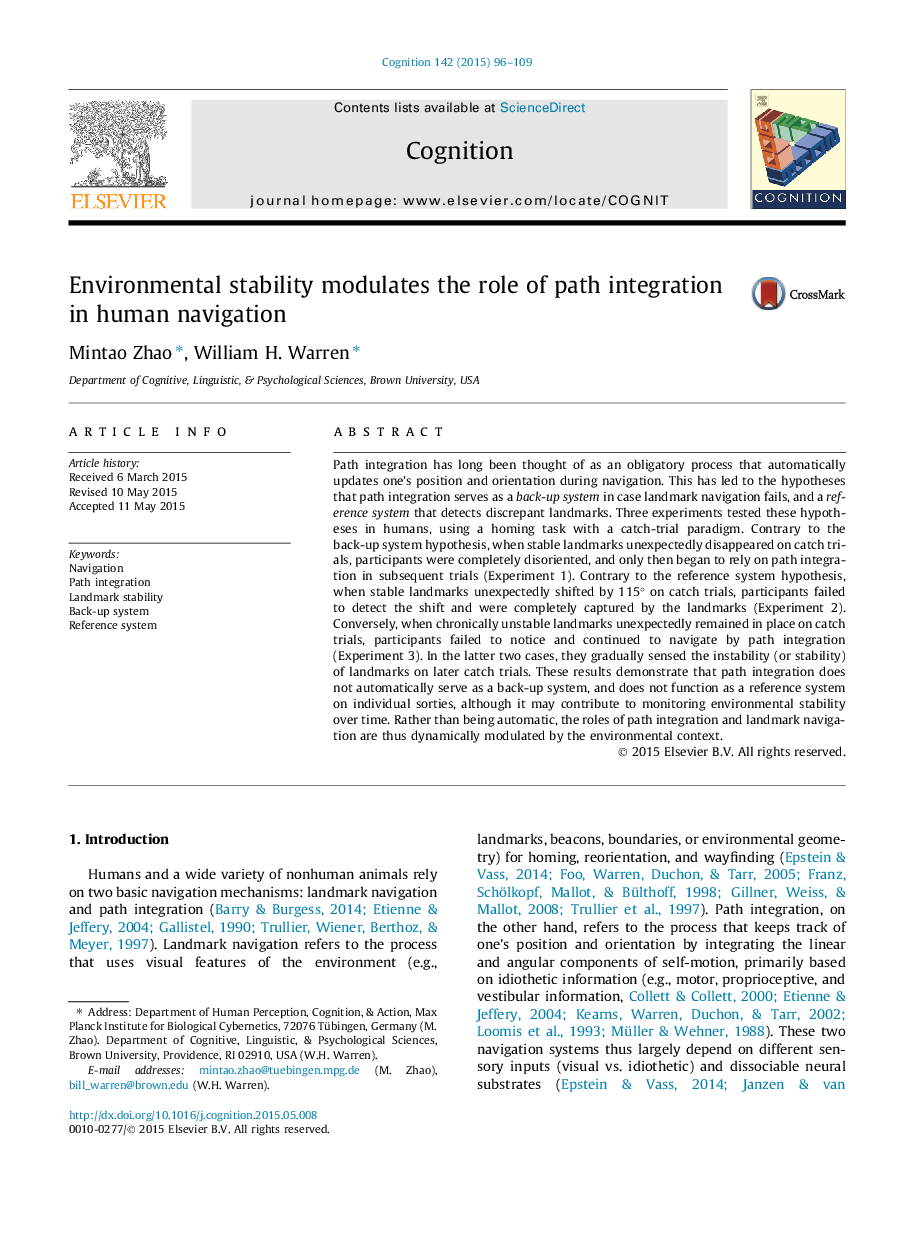| Article ID | Journal | Published Year | Pages | File Type |
|---|---|---|---|---|
| 7286797 | Cognition | 2015 | 14 Pages |
Abstract
Path integration has long been thought of as an obligatory process that automatically updates one's position and orientation during navigation. This has led to the hypotheses that path integration serves as a back-up system in case landmark navigation fails, and a reference system that detects discrepant landmarks. Three experiments tested these hypotheses in humans, using a homing task with a catch-trial paradigm. Contrary to the back-up system hypothesis, when stable landmarks unexpectedly disappeared on catch trials, participants were completely disoriented, and only then began to rely on path integration in subsequent trials (Experiment 1). Contrary to the reference system hypothesis, when stable landmarks unexpectedly shifted by 115° on catch trials, participants failed to detect the shift and were completely captured by the landmarks (Experiment 2). Conversely, when chronically unstable landmarks unexpectedly remained in place on catch trials, participants failed to notice and continued to navigate by path integration (Experiment 3). In the latter two cases, they gradually sensed the instability (or stability) of landmarks on later catch trials. These results demonstrate that path integration does not automatically serve as a back-up system, and does not function as a reference system on individual sorties, although it may contribute to monitoring environmental stability over time. Rather than being automatic, the roles of path integration and landmark navigation are thus dynamically modulated by the environmental context.
Related Topics
Life Sciences
Neuroscience
Cognitive Neuroscience
Authors
Mintao Zhao, William H. Warren,
